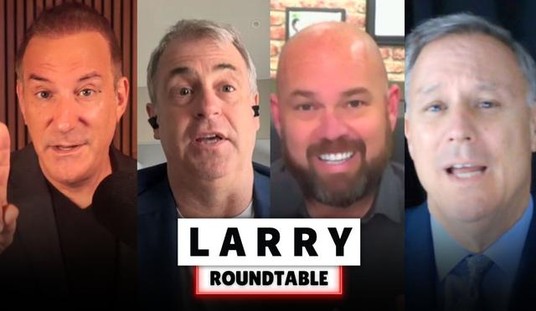Update: In its last open meeting held on November 16, the FCC voted to modernize its broadcast ownership rules and establish and seek comment on an incubator program to promote ownership diversity.
The FCC is finally modernizing its media regulatory regime. It’s about time. Newspapers are in dire straits with both circulation and print ad revenues at all time lows. These effects are especially concentrated in small markets. Local newspapers––like the Baltimore Examiner, Kentucky Post, Cincinnati Post, Albuquerque Tribune, and the Pittsburgh Tribune-Review, which used to be profitable publications have shut down over the past few years. Many other newspapers have reduced services or shifted to online only.
The newspaper-broadcast cross-ownership rule, initiated by the Federal Communication Commission in 1975, bars a single company from owning a newspaper and a broadcast station in the same market. It made sense in 1975 but is outdated for today’s market. Newspapers don’t have the gatekeeping power they did when the rule was instated, a time when TV news wasn’t dominant and the internet was a mere twinkle in Al Gore’s eye.
Under the leadership of Chairman Pai, the FCC is finally proposing to eliminate the rule. These efforts should be welcomed since ending it would make newspapers more profitable by allowing them to distribute information over multiple platforms.
According to a 2016 Pew Study, 38 percent of Americans get their news from mainly online sources compared to just 20 percent from print newspapers. Print simply can’t compete with the internet in terms of its accessibility and efficiency. Online news doesn’t require a subscription, is immediately available, and updates in real time.
Recommended
However, newspapers don’t need to compete with online news since they provide different benefits. Newspapers are main contributors to coverage of Congressional representatives and statehouses. According to a Pew Research Study from 2014, 38 percent of statehouse reporters are employed by newspapers while Radio and TV stations combined employ just 25 percent. Moreover, the number of reporters employed by newspapers has decreased by 34 percent from 2003 to 2014.
The decline of local news is shown to decrease citizens’ political knowledge and participation. Members of Congress hailing from areas with less coverage are less likely to serve on constituency-oriented committees, vote against the party line, and stand witness before congressional hearings. Moreover, federal spending is lower in areas where there is less press coverage of local members of Congress.
The FCC’s last defense for keeping the rule is “preserving viewpoint diversity.” That might have been the case back in 1975, but with the explosion of the internet and cable, this claim doesn’t hold up to even basic scrutiny. There are more voices in the media market than ever before; therefore, the fear of concentration of voices is overblown. For instance, Denver has 150 sources of news; co-ownership of some sources simply has no effect on viewpoint diversity. The FCC, by keeping these rules, is essentially regulating against hypothetical harms.
It also ignores bouts of empirical evidence contrary to their claim. A 2011 FCC-sponsored study showed no change in viewpoint diversity for newspaper-radio combinations and a 2012 revision showed an increase for newspaper-TV combinations. The FCC also acknowledges such combinations enhance the breadth and depth of news coverage. FCC-sponsored studies show that cross-ownership significantly increases news and public affairs programming by radio and TV stations. For instance, the "I-Team," a product of TV-newspaper cross-ownership in Dayton, Ohio, produces high quality local investigative journalism. The group exposed misuse of Veterans Administration’s funds in 2014 and its ongoing Payroll Project tracks state employee salaries. The rule disallows hundreds of similar potential projects and consequently, citizens lose out.
In 2008, the FCC finally succeeded in lifting the blanket ban after two failed attempts. It rolled back the rule and decided to permit certain newspaper-broadcast combinations in the largest 20 markets. However, it didn’t provide sufficient rationale as to why the rule was relaxed only in the top 20 markets. This distinction is completely arbitrary and is a bad indicator of how diverse a particular media market is. For instance, Detroit, ranked 14, has nine TV stations and 107 radio stations compared to Indianapolis, ranked 25, which has 19 TV stations and 131 radio stations.
The 2008 order also adopted a “Presumption Against All Other Combinations.” However, consumers would be better served if the FCC began from the opposite assumption that in the absence of demonstrated harm, mergers are likely to benefit consumers because far from being a suppression of market forces, they are a critical market mechanism.
The FCC then evaded its congressional responsibility by taking eight years to perform the 2010 review when it is required by law to perform one every four years. In Prometheus v. FCC, the Third Circuit aptly describedthe consequences of this derailment of the review process, stating “[t]his has come at significant expense to parties that would be able, under some of the less restrictive options being considered by the Commission, to engage in profitable combinations.”
The FCC’s incompetence, at least until Pai became chairman, at evaluating these rules epitomizes a classic problem with regulatory agencies––their inability to keep up with technological change. The current rule is simply outdated. It neither serves the public interest nor the FCC’s stated goal of promoting competition, localism, and diversity in local media markets.
The new notice, to be voted in the next open meeting, would eliminate the print-broadcast cross-ownership rule, modify many other regulations, and seek comment on an incubator program “that will facilitate entry of new and diverse voices in the broadcast industry.” The FCC is finally recognizing the changes in the media marketplace and the numerous benefits that cross-ownership provides, and is rightly proposing to eliminate the rule.
Pranjal Drall is a Policy Fellow at TechFreedom, a post-partisan think-tank in Washington, where he focuses on telecom, internet freedom, and emerging technologies.

























Join the conversation as a VIP Member